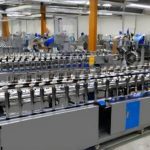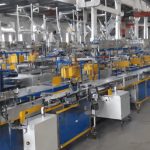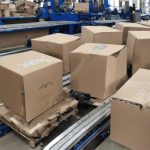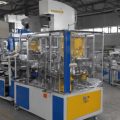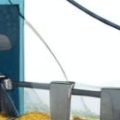
The Evolution of Aluminium Foil Containers
Aluminium foil containers have become a staple in kitchens and food industries worldwide. Their versatility, durability, and recyclability make them an ideal choice for packaging and storing food. But have you ever wondered how these containers are made? The process is intricate and involves several stages, each crucial to producing the final product.
The Raw Material: Aluminium
Extraction and Refinement
The journey of aluminium foil containers begins with the extraction of bauxite ore. This ore is refined to produce alumina, which is then smelted to obtain pure aluminium. The aluminium is cast into large ingots, which are then rolled into thin sheets.
Rolling and Annealing
The aluminium sheets are rolled to the desired thickness. This process involves passing the sheets through a series of rollers. To achieve the required flexibility and strength, the sheets undergo annealing, a heat treatment process that softens the metal.
Forming the Containers
Blanking and Forming
Once the aluminium sheets are ready, they are fed into a blanking machine, which cuts them into specific shapes and sizes. These blanks are then transferred to a forming machine, where they are molded into the desired container shapes through a combination of pressure and heat.
Trimming and Curling
After forming, the containers undergo trimming to remove any excess material. The edges are then curled to ensure they are smooth and safe to handle. This step is crucial for maintaining the integrity and usability of the containers.
Quality Control and Packaging
Inspection and Testing
Quality control is a vital part of the manufacturing process. Each container is inspected for defects such as holes, cracks, or uneven edges. They are also tested for durability and heat resistance to ensure they meet industry standards.
Packaging
Once the containers pass the quality checks, they are ready for packaging. This is where the air bubble packaging machine comes into play. The air bubble packaging machine ensures that the containers are securely packed, protecting them from damage during transportation. The use of air bubble packaging machine is essential for maintaining the quality and integrity of the aluminium foil containers.
The Role of Technology in Production
Automation and Efficiency
Modern technology has revolutionized the production of aluminium foil containers. Automated systems and advanced machinery have increased efficiency and reduced production time. The air bubble packaging machine, for instance, has streamlined the packaging process, ensuring that the containers are packed quickly and securely.
Environmental Considerations
With growing concerns about environmental sustainability, manufacturers are adopting eco-friendly practices. Aluminium is a recyclable material, and the production process is designed to minimize waste. The use of air bubble packaging machine also contributes to sustainability by reducing the need for additional packaging materials.
Conclusion
The production of aluminium foil containers is a complex process that involves several stages, from the extraction of raw materials to the final packaging. Each step is crucial to ensuring the quality and durability of the containers. The use of advanced technology, such as the air bubble packaging machine, has significantly improved the efficiency and sustainability of the production process. As a result, aluminium foil containers continue to be a popular choice for food packaging and storage, offering a reliable and eco-friendly solution.
